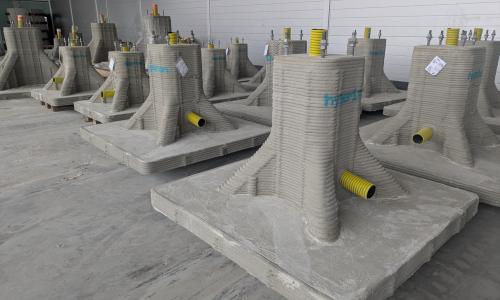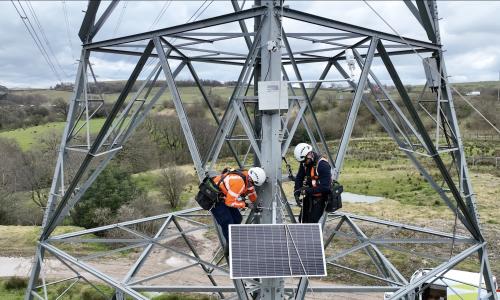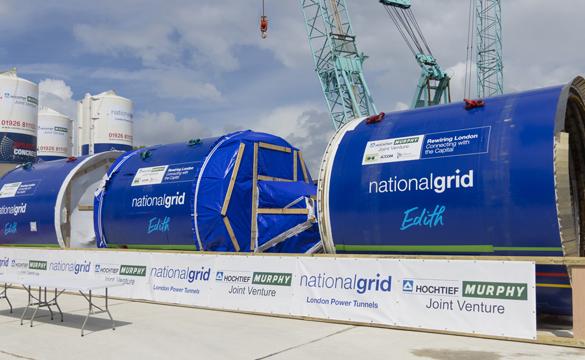
32.5 km tunnelling project under London begins
National Grid is due to start tunnelling for its £1 billion flagship project to rewire South London – vital works for London’s electricity supply that will allow us to keep the lights on well into the future.
A formidable tunnel boring machine called ‘Edith’ and weighing around 140 tonnes – equivalent to about eight London buses – has arrived at our London Power Tunnels New Cross site. This marks a significant milestone for the project and the start of Edith’s journey to help construct 32.5 km of tunnels deep below the streets of South London, between Wimbledon and Crayford.
Ensuring power reaches Londoners safely with minimal disruption
The London Power Tunnels (LPT) will minimise disruption for Londoners by housing electricity cable infrastructure in tunnels up to 60 metres below street-level. The new cables will replace three circuits that currently run under the surface of roads between Wimbledon in the southwest and Crayford in the southeast.
Alice Delahunty, President of Electricity Transmission at National Grid, said: “Our London Power Tunnels project is making sure electricity reaches homes and businesses in London safely, reliably and efficiently. The arrival and launch of ‘Edith’ at New Cross is an exciting milestone for this project.”
Investing in post-pandemic London
LPT represents a significant £1 billion investment in London and follows the success of the original London Power Tunnels project, north of the Thames, which involved building 32 km of tunnels and two new substations between 2011 and 2018.
Construction on the new, vital infrastructure project began in March 2020, carrying on safely through COVID-19. The arrival and launch of the tunnel boring machine this spring represents an exciting new chapter for this project and for London.
The overall project will be completed by 2027 and the three sections we are working on are:
- Circuit 1: Wimbledon to New Cross – operational by 2025
- Circuit 2: New Cross to Hurst – operational by 2027
- Circuit 3: Hurst to Crayford – operational by 2024
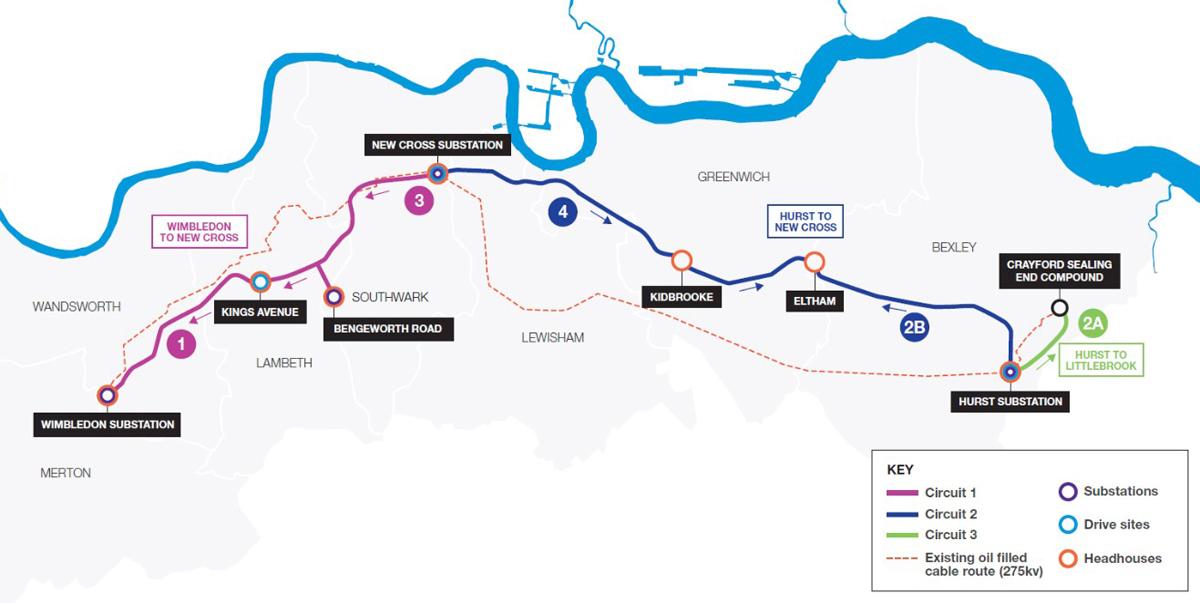
Alice said: “A huge amount of work has gone into making this possible, so I would like to thank everyone who has been involved in the success of this project so far – especially as the project began at the start of the pandemic. Despite its challenges, our engineers have been able to deliver this vital project and reach this milestone.”
The milestone arrival of the tunnel boring machine
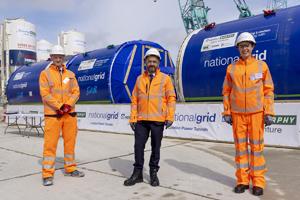
An event was held to celebrate the arrival of ‘Edith’ at the New Cross site and was attended by Minister for London Paul Scully MP, giving attendees the opportunity to view the impressive machine before it’s lowered into the ground to begin tunnelling.
Commenting on the project and the event, Paul said: “As well as keeping the lights on, the £1 billion investment through the London Power Tunnels project shows the full range of London’s engineering talent that is helping to build back better from the pandemic.
“It was great to smash the metaphorical champagne bottle across National Grid’s new 140-tonne tunnel boring machine, which is heavyweight tech for a heavyweight project, and I wish it every success on its maiden voyage.”
Paul formally inaugurated the boring machine, which was named by staff on the project to honour Edith Clarke; the first female electrical engineer and pioneer who used maths to improve our understanding of power transmission. ‘Edith’ was also blessed by a local religious leader next to an image of Saint Barbara, the patron saint of underground workers – a tradition carried out on tunnelling projects, to watch over and protect its workers.
Watch related video

